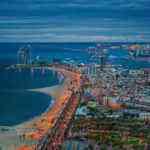From free Sunday mass at La Sagrada Família to the exquisite and uncrowded Sant Pau to insider access to Fundació Joan Miró thanks to a hotel hookup, here’s how to duck the crowds in Spain’s most popular city.
You’ve probably heard that Barcelona is crowded. Maybe because Barcelona “overtourism” headlines have been crowding the travel news cycle since 2016, when tourism statistics indicated that Barcelona’s 1.6 million residents were overwhelmed by 32 million visitors that year. That’s a lot of selfie sticks and fanny packs. The Guardian described it as a “tourist theme park.” CNN included Barcelona at the top of their list of destinations to avoid in 2018, and Barcelona’s own mayor made headlines the world over with a law that imposed a moratorium on new hotels and tourist apartments in an effort to curb visitors. This was followed by reports of graffiti and signs posted around the city telling tourists to go home. Between the law and the locals, it might seem that “Bypass Barcelona” is the not-so-subtle message. But should you just resign Barcelona to the same fate as Venice? The oh-well-I-wish-I’d-visited-sooner list? I spent a few days there to see if Barcelona is still worth visiting, and spoiler alert: the answer is a hard yes.
There’s a reason millions of people visit Barcelona every year: it’s a cool city with some of the world’s most interesting and beautiful sights. Is it busy? Sure, but contrary to the hype, the entire city does not feel like Times Square. And there are ways to dodge the crowds and have a great time—as long as you know what you’re doing.





